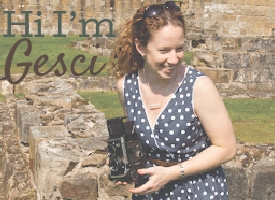Liverpool's streets were covered in art- partly from a current exhibition, Liverpool Discovers, but also just from being a city that embraces and celebrates creativity. I think I was more excited about following the art trail than anything else!
This is the Super Lambanana, a sculpture by Taro Chiezo designed to warn against genetically modified foods. It's been a Liverpool staple since 1998. I think it's fantastic!
Liverpool loves the Super Lambanana so much this flat has a topiary of it on the balcony! (top floor)
This is the John Lennon Peace Monument. Created by Lauren Voiers, it was unveiled October 2010.
Now I'll show you some of the Liverpool Discovers Trail.
There was one that we saw early on the 21st but didn't realize was part of the trail and I didn't take a picture of it- it is a large white cube (representative of a sugar cube) with a thick chain and shackle. This piece stands for Liverpool's history in the sugar industry and slave trade.
There were some we saw that I didn't photograph, but hopefully this gives you an idea of the exhibition- it was amazing.
My descriptions are paraphrased from the website's information.
Joe Rush created this piece, representing the many medical discoveries that have occurred in Liverpool. In 1896 the first x-ray was performed here by Charles Barkla to aid in treating a young boy who had a bullet lodged in his wrist. Another internationally significant advancement was in 1902 at Liverpool's School of Tropical Medicines- when Ronald Ross found that mosquitoes transmit malaria to humans.
This piece, by Andy Plant, is in honor of Jeremiah Horrocks, a brilliant 17th century astrophysicist. One of his greatest accomplishments was the first recording of the Transit of Venus in 1639.
There were several of these Mythophones around the city, designed by Dave Young and Dan Fox. When you pressed the button on the mythophone you were treated to a song, tale, reading, or some other presentation relevant to the location of the piece.
Fish & Ships, this sculpture by David Kemp, stands for the River Mersey. Liverpool's life-source, the river is one of the busiest in the country. The "portholes" on the sculpture hold "passengers" waving goodbye as the wind blows them.
Stephenson's Destinator, by Aragorn Horner, was my favorite by far. George Stephenson built the first modern passenger locomotive, "Rocket", in 1829. While it brought great excitement, like all technological advancements the Victorians also held great apprehension at this metal beast. Paul and I both willingly took rides on the Destinator...
Mary Bamber is honored with this statue by Carrie Reichardt and Nick Reynolds. An early suffragette, she now stands in the "Speaker's Corner" at St. George's Plateau- where we saw a current protest!
Really not sure why she had baby faces on her waist or skulls on her hem...























Cool!
ReplyDelete